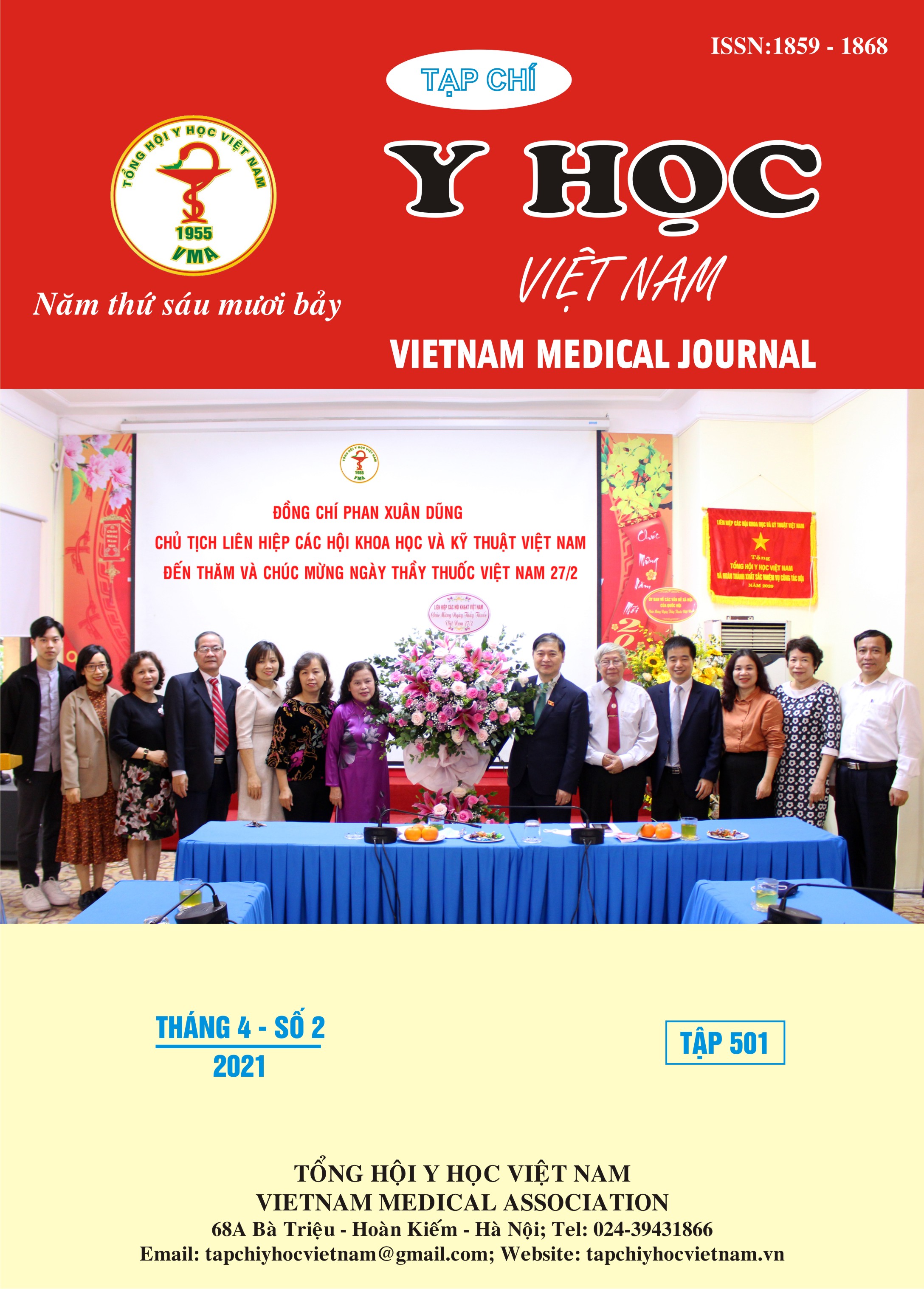SELF-GRIPPING MESHES PARIETEX PROGRIP (COVIDIEN) FOR LICHTENSTEIN INGUINAL HERNIA REPAIR AT HOSPITALS OF THANH HOA PROVINCE
Main Article Content
Abstract
Objective: To describe technics and evaluate outcomes of using self-gripping mesh Parietex Progrip (Covidien) for Lichtenstein inguinal hernia repair at hospitals of Thanh Hóa province. Patients and methods: A pro-descriptive cases study based on patient suffered inguinal hernia and underwent self-gripping meshes Parietex Progrip (Covidien) for Lichtenstein repair at hospitals of Thanh Hóa province. Surgical technics were described as well as clinical, para-clinical features and primary results also reported. Results: From Jan. 2020 to Mars 2021, 68 patients with inguinal hernia underwent Lichtenstein repair using self-gripping meshes Parietex Progrip (Covidien). All patients are males, mean age: 53.9±17.00 years (16-89), BMI: 21.2±1.79 (16.9±27.3), primary hernia seen in 67 patients while recurrent hernia after Bassini repair in only one. Spinal anesthesia used for all patients. A linea skin incision parallel to the inguinal ligament overlying the proposed region of the external ring is used in most cases (97.1%) while the transversal incision used in only one. The mean length of skin incision: 6.9±1,71cm (6-18); the total operative time: 54,7±7,74 mnt (25-80), time needed for inguinal canal dissection: 20,4±16,68 mn (10-50) and time for the mesh placing: 6,0±1,09 mn (5-10). No per-operative accidents seen during operation. Postoperative urinary retention were seen in 11 patients (16.2%). Mean day of postoperative pain: 6.2 ± 0.71 days (4-7) with light or moderate degree. Results at one month following initial operation: good/nornal in 55 patients (80.9%), sensation of tension at inguinal area in 7 patients (10.3%). Conclusion: The Lichtenstein inguinal hernia repair using Self-gripping meshes Parietex Progrip (Covidien) seemed to be effective, safe and is associated with low postoperative pain
Article Details
Keywords
Inguinal hernia, Hernia plasty, self-gripping meshes Parietex Progrip (Covidien)
References
2. Wang Y, Zhang X. Short-term results of open inguinal hernia repair with self-gripping Parietex ProGrip mesh in China: A retrospective study of 90 cases. Asian Journal of Surgery. 2016;39(4):218-224. doi:10.1016/j.asjsur.2015.05.001
3. Voyles C. R. Outcomes analysis for groin hernia repairs. Surg Clin North Am. 2003;83(5):1279.
4. Porrero JL, Cano-Valderrama O, Castillo MJ, Alonso MT. Proposed technique for inguinal hernia repair with self-gripping mesh: avoiding fixation to undesired structures. Hernia : the journal of hernias and abdominal wall surgery. 2015;19(5):771-774. doi:10.1007/s10029-014-1315-8
5. Köhler G, Lechner M, Mayer F, et al. Self-Gripping Meshes for Lichtenstein Repair. Do We Need Additional Suture Fixation? World journal of surgery. 2016;40(2):298-308. doi:10.1007/s00268-015-3313-0
6. Lechner MN, Jäger T, Buchner S, Köhler G, Öfner D, Mayer F. Rail or roll: a new, convenient and safe way to position self-gripping meshes in open inguinal hernia repair. Hernia : the journal of hernias and abdominal wall surgery. 2016;20(3):417-422. doi:10.1007/s10029-015-1389-y
7. Rosenberg J, Andresen K. The Onstep Method for Inguinal Hernia Repair: Operative Technique and Technical Tips. Vilallonga R, ed. Surgery Research and Practice. 2016;2016:6935167. doi:10.1155/2016/6935167.


